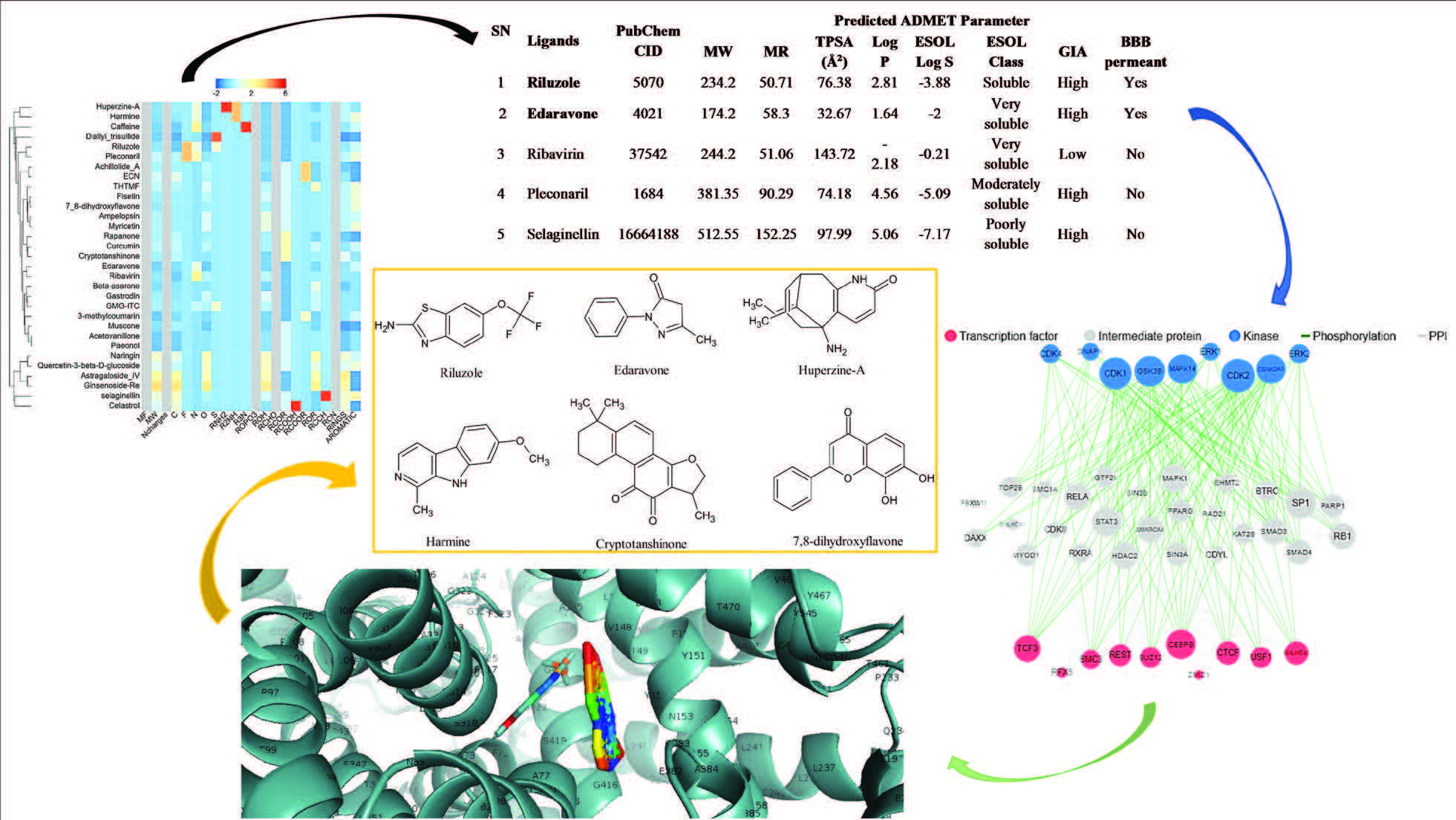Harmine and 7,8-dihydroxyflavone synergistically suitable for amyotrophic lateral sclerosis management: An in silico study
DOI:
https://doi.org/10.3897/rrpharmacology.8.83332Abstract
Introduction: Amyotrophic lateral sclerosis (ALS) is a fatal neurological disease characterized by progressive degeneration of both upper and lower motor neurons, resulting in paralysis and eventually leads to death from respiratory failure typically within 3 to 5 years of symptom onset. The aim of this work was to predict the pharmacokinetics and identify unique protein targets that are associated with potential anti-ALS phytochemicals and FDA-approved drugs, by in silico approaches.
Materials and methods: Standard computational tools (webserver and software) were used, and the methods used are clustering analysis, pharmacokinetics and molecular target predictions, and molecular docking simulation.
Results and discussion: The results show that riluzole, β-asarone, cryptotanshinone, harmine and 7,8-dihydroxyflavone have similar pharmacokinetics properties. Riluzole and harmine show 95% probability of target on norepinephrine transporter. Huperzine-A and cryptotanshinone show 100% probability of target on acetylcholinesterase. 7,8-dihydroxyflavone shows 35% probability of target on several carbonic anhydrases, 40% probability of target on CYP19A1, and 100% probability of target on inhibitor of nuclear factor kappa B kinase beta subunit and neurotrophic tyrosine kinase receptor type 2, respectively. Harmine also shows 95% probability of target on dual specificity tyrosine-phosphorylation-regulated kinases, threonine-protein kinases (haspin and PIM3), adrenergic receptors, cyclin-dependent kinases (CDK5 and CDK9), monoamine oxidase A, casein kinase I delta, serotonin receptors, dual specificity protein kinases (CLK1, CLK2, and CLK4), and nischarin, respectively. Also, the results of gene expression network show possible involvement of CDK1, CDK2, CDK4, ERK1, ERK2 and MAPK14 signaling pathways. This study shows that riluzole and harmine have closely similar physicochemical and pharmacokinetics properties as well as molecular targets, such as norepinephrine transporter (SLC6A2). Harmine, huperzine-A and cryptotanshinone could modulate acetylcholinesterase (AChE), which is involved in ALS-pathogenesis. The impact of 7,8-dihydroxyflavone on several carbonic anhydrases (CA) I, II, VII, IX, XII, and XIV, as well as CYP19A1, could help in remediating the respiratory failure associated with ALS.
Conclusion: Overall, harmine is found to be superior to riluzole, and the combination of harmine with 7,8-dihydroxyflavone can provide more effective treatment for ALS than the current regime. Further work is needed to validate the predicted therapeutic targets of harmine identified in this study on ALS model or clinical trials, using in silico, in vitro and in vivo techniques.
Graphical abstract:
 Русский
Русский
 English
English

